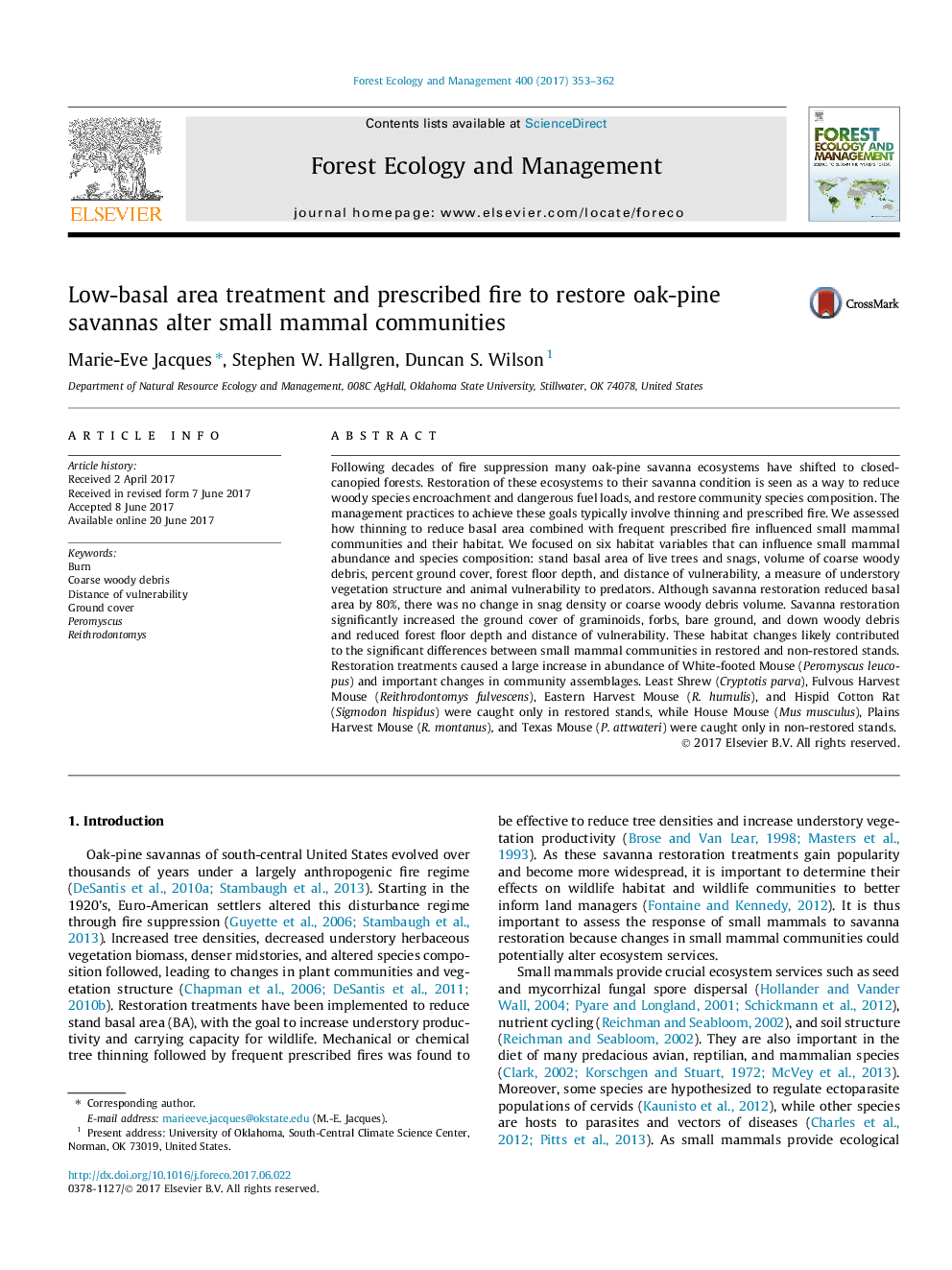| کد مقاله | کد نشریه | سال انتشار | مقاله انگلیسی | نسخه تمام متن |
|---|---|---|---|---|
| 6459256 | 1421358 | 2017 | 10 صفحه PDF | دانلود رایگان |
- Oak-pine savannas became dense forests due to fire suppression in south-central United States.
- Thinning and frequent prescribed fires is used to restore savannas.
- Restoration increased graminoid, forb, bare ground, and woody debris.
- Restoration reduced the forest floor depth and increased visual obstacles.
- Restoration likely contributed to changes in small mammal communities.
Following decades of fire suppression many oak-pine savanna ecosystems have shifted to closed-canopied forests. Restoration of these ecosystems to their savanna condition is seen as a way to reduce woody species encroachment and dangerous fuel loads, and restore community species composition. The management practices to achieve these goals typically involve thinning and prescribed fire. We assessed how thinning to reduce basal area combined with frequent prescribed fire influenced small mammal communities and their habitat. We focused on six habitat variables that can influence small mammal abundance and species composition: stand basal area of live trees and snags, volume of coarse woody debris, percent ground cover, forest floor depth, and distance of vulnerability, a measure of understory vegetation structure and animal vulnerability to predators. Although savanna restoration reduced basal area by 80%, there was no change in snag density or coarse woody debris volume. Savanna restoration significantly increased the ground cover of graminoids, forbs, bare ground, and down woody debris and reduced forest floor depth and distance of vulnerability. These habitat changes likely contributed to the significant differences between small mammal communities in restored and non-restored stands. Restoration treatments caused a large increase in abundance of White-footed Mouse (Peromyscus leucopus) and important changes in community assemblages. Least Shrew (Cryptotis parva), Fulvous Harvest Mouse (Reithrodontomys fulvescens), Eastern Harvest Mouse (R. humulis), and Hispid Cotton Rat (Sigmodon hispidus) were caught only in restored stands, while House Mouse (Mus musculus), Plains Harvest Mouse (R. montanus), and Texas Mouse (P. attwateri) were caught only in non-restored stands.
Journal: Forest Ecology and Management - Volume 400, 15 September 2017, Pages 353-362
